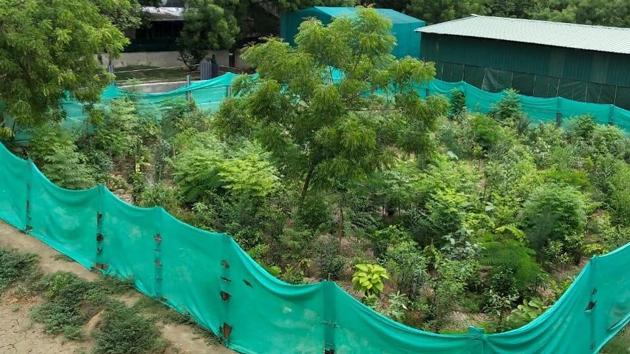Urban forests: A green step in the right direction
The Brihanmumbai Municipal Corporation (BMC), said the report, has already finalised 61 of the 100 sites on which it wants to develop ‘urban forests’ and enhance Mumbai’s green cover.
Some good news was tucked away in a corner in Thursday’s edition of this newspaper. The Brihanmumbai Municipal Corporation (BMC), said the report, has already finalised 61 of the 100 sites on which it wants to develop ‘urban forests’ and enhance Mumbai’s green cover.

Each site, says the report further, will be of one hectare (100 acres). This adds up to 10,000 acres, which may not seem terribly large in the context of a megapolis like Mumbai, but is an important step in the right direction. One hopes that the remaining sites will be identified soon.
The project is the brainchild of BMC commissioner Praveen Pardeshi who’s been grappling with issues of waterlogging, flooding and the sundry health problems that follow. The monsoon’s been particularly harsh this year and the collateral damage has been heavy.
As gleaned from reports, Pardeshi has also raised the issue and talked of effect of climate change on cities and the planet.
It is refreshing to know someone in authority is looking at tackling such crises holistically, rather than just episodically, in band-aid treatment fashion.
These urban forests will be modelled on the Japanese Miyawaki system of plantation. Not being a ‘green warrior’, I am not totally familiar with the technique behind this. But I have seen a few during my visit to Japan a few years back, and can aver that it looks and feels like a forest.
It is now increasingly evident that unless cities (by extension countries and the planet) pay attention to sustainable development, the consequences can be disastrous. Rampant growth, while good for headlines, comes loaded with peril.
This comes through from not just from the travails of rapidly developing countries intent on `instant’ urbanisation, but even more in the developed world, where these issues were ignored for decades and have now started hurting cities and people living in them.
For instance, temperatures climbing to 40+ degrees Celsius this summer in several parts of Europe is seen as an impact of long-term negligence of ecological concerns, which in turn has contributed substantially to climate change.
There is now deep worry, and a flurry of activity globally to redress the situation in these countries.
What the remedial measures can be and how they work is being hotly researched and urgently implemented. Among these, establishing a green cover is seen as imperative.
The text-book definition of green cover is, “Natural or planted vegetation covering a certain area of terrain, functioning as protection against soil erosion, protecting the fauna, and balancing the temperature.”
This obviously does not mean devastating forests and trying to compensate with planting trees elsewhere. Ecological equilibrium does not work like that. But yes, cities can be helped enormously by improving greenery.
Don’t uproot trees, rather plant more is the clear missive. The scope for greening a city is not restricted to planting trees but also encouraging construction of eco-friendly buildings with roof gardens, reflective walls et al.
Apart from preventing waterlogging and flooding, as the BMC commissioner has argued, a direct co-relation is being seen between expanding the green cover in cities and health of people living in these on several parameters. So any thrust in this area is a no-brainer.
Mumbai’s record in this aspect, however, has been dismal and alarming. Trawling the Internet, I found a two-year-old story in Hindustan Times by Snehal Fernandes and Badri Chatterjee (World environment day: Mumbai lost 60% of its green cover in 40 years, June 5, 2017), which highlights how Mumbai’s development has robbed the city of 60% of its vegetation and 65% of its water bodies.
This shocking statistic emerges from a study led by the Indian Institute of Science (Bangalore), spanning a period of four decades, and the report has a foreboding warning from Profesor Bharath H Aithal (of IIT Kharagpur) who co-authored the study.
“Mumbai, with one of the highest amount of sprawl, is heading towards a complete urban disaster. Basic amenities such as water and vegetation for pure air will be almost non-existent if planners do not take note and stop unplanned urbanisation and outgrowth in the urban periphery,” he told the HT reporters then.
The warning in Professor Aithal’s statement is unambiguous and still persists. Plaudits to the BMC commissioner for initiating a project that can go some way in redressing the situation.
The challenge ahead of him now is to go from the drawing board to successful implementation.



